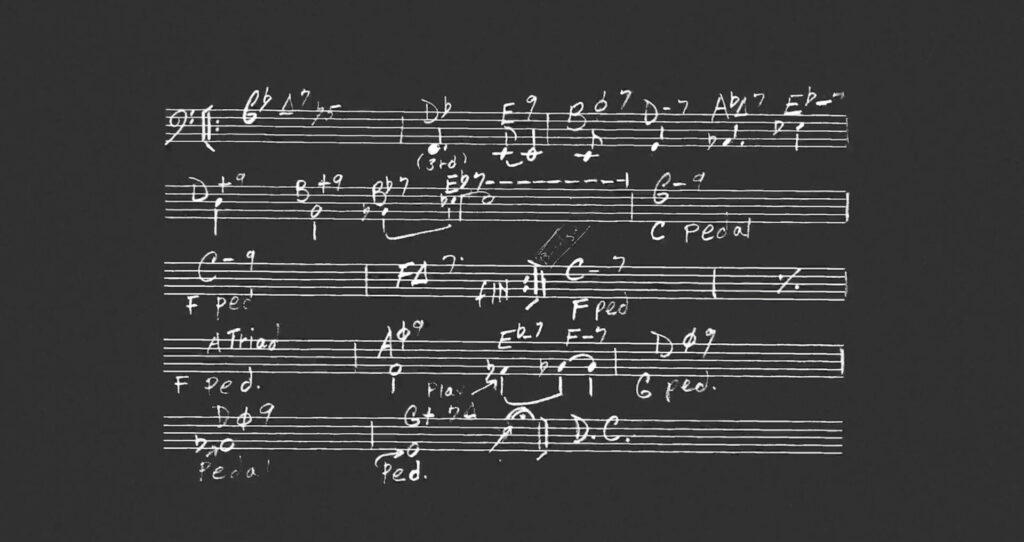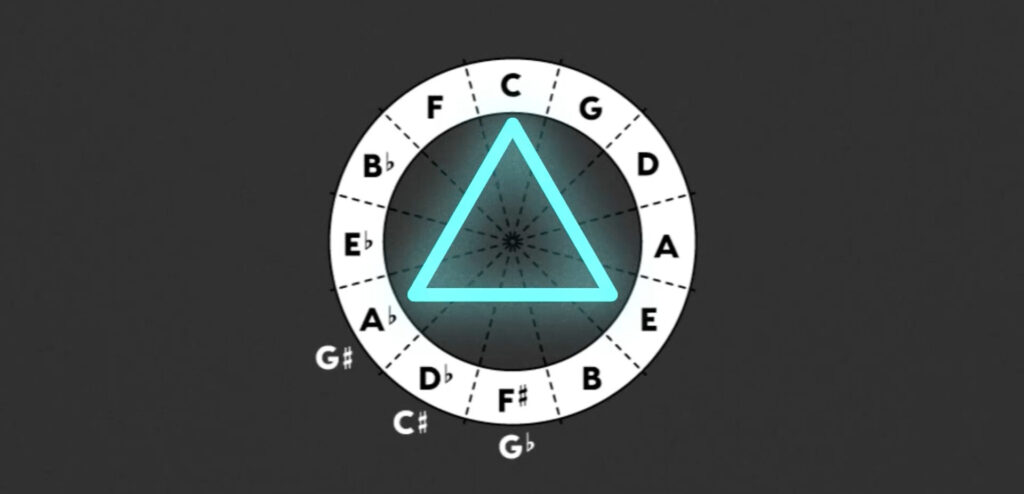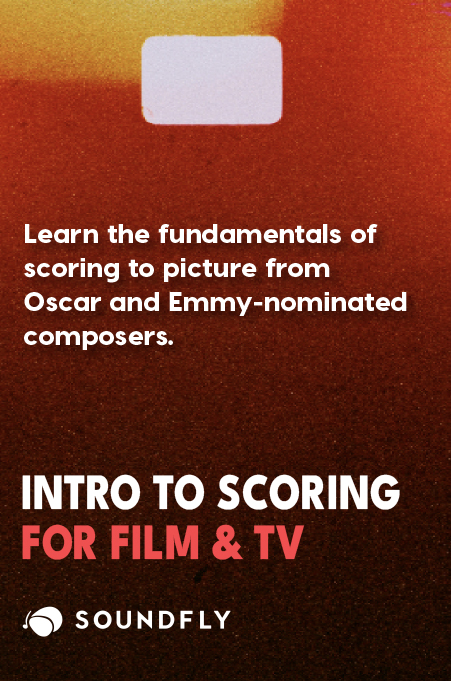How exactly did this — △ — come to represent a major 7th chord on lead sheets?
Prompted by an innocent question on Soundfly’s member community Discord, we decided to look into why this mysterious triangular symbol, or delta, started appearing on musical charts, who authored it first, how its meaning has actually changed over the years, and potentially how it ended up there in the first place.
In today’s newly launched video, we uncover the curious case of the △7.
Go ahead and enjoy this in-depth look at the mysterious origins of the major 7th triangle symbol, and subscribe to our YouTube channel for more of these videos as soon as they come out! And if you’re looking to level up your musical skills, join Soundfly’s all-access membership here.

The Major Seventh
You may have noticed that there are a few different ways to indicate a major 7th chord. There’s:
- CMaj7
- C^
- CM7
- C Mj7
- And finally: △7
So firstly, what is a major 7th chord?
Let’s start by talking about triads. You’ve got four kinds of triads: major, minor, diminished, and augmented. Here they all are:

- A major triad is a major third with a minor third stacked on top.
- A minor triad is a minor third with a major third stacked on top.
- A diminished triad is two minor thirds stacked on top of each other.
- And an augmented triad is two major thirds stacked on top of each other.
Got it? Great.
The major seventh is made up of a major triad and a major seventh.

In the above example, the C major triad C-E-G has an added major seventh above the root note, which creates the chord: C-E-G-B.
But, Why a Triangle?
To begin with, this is a form of “musical shorthand” — a symbol to represent a vague outline of what chords go under a melody written out in musical notation, typically on a lead sheet.

Jazz musicians and composers — especially those who play monophonic instruments like saxophone or trumpet — will use lead sheets to sketch out their melody and accompanying chords that a pianist, guitarist, or bassist might play underneath. And the open-ended nature of these sheets lend well to the improvised, flexible nature of jazz music in particular.
And so our search for the origin of the triangle led us first to John Coltrane, whose hand-written drafts for “Naima” and “Lady Bird” contained triangles and were likely written in 1959, according to jazz historian Peter Spitzer.
Coltrane’s lead sheet only included the “∆.” However, Spitzer also found a lead sheet written by Wayne Shorter, likely also in 1959, that featured the fully-written out “∆7.”
And going back even further, it seems that Charles Mingus was writing charts potentially as early as 1957-58 that feature the following: “-∆7” to indicate a minor major seventh (which is something else entirely).
The minor major seventh chord is most often used in jazz, typically functioning as a minor tonic. It is a seventh chord composed of a root, minor third, perfect fifth, and major seventh (1, ♭3, 5, and 7). It can be viewed as a minor triad with an additional major seventh, or, a root with an augmented triad stacked above it.
This intervalic relationship is perfectly represented on the Circle of Fifths by none other than: a triangle.

So with this arrangement in mind, there’s a possibility that the triangle represents the form of an augmented triad going back as far and deep into Classical music as you like…
However, further research has unearthed an even older lead sheet than Mingus’s, likely written by Gerry Mulligan in the 1948-49 rehearsal sessions leading up to the live recordings that make up Miles Davis’ Birth of the Cool.
Specifically, Mulligan’s chord charts for “Jeru” feature a TON of triangles, yet not one of them indicates a minor major seventh…
So, in the end, the triangle is still kind of a mystery.
But you can use it anyway you like (as long as you use it for a major 7th chord).
Improve your music with creativity & curiosity on Soundfly.
Subscribe to our YouTube channel for weekly videos, or join Soundfly’s all-access membership to all of our artist-led online music courses, an invite to join our Discord community forum, exclusive discount perks from partner brands, access to artist Q&As and workshops, and more.



